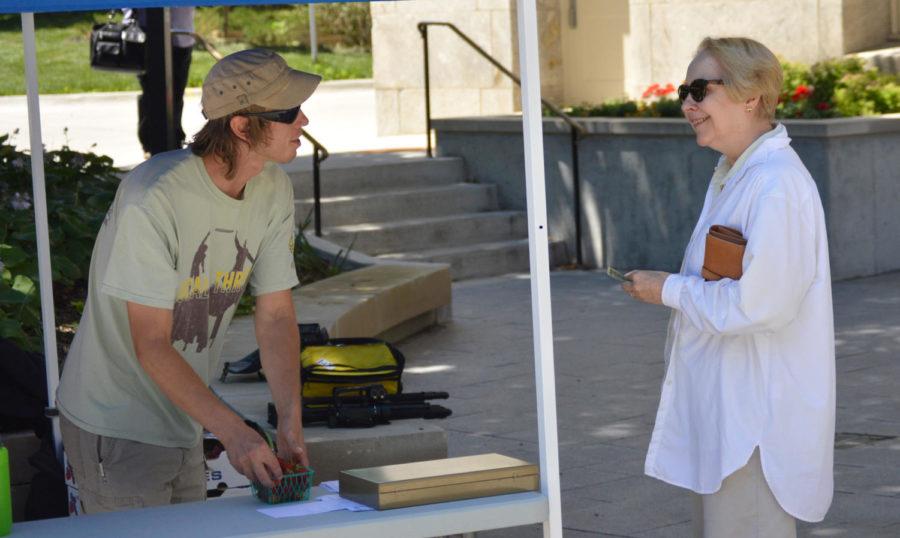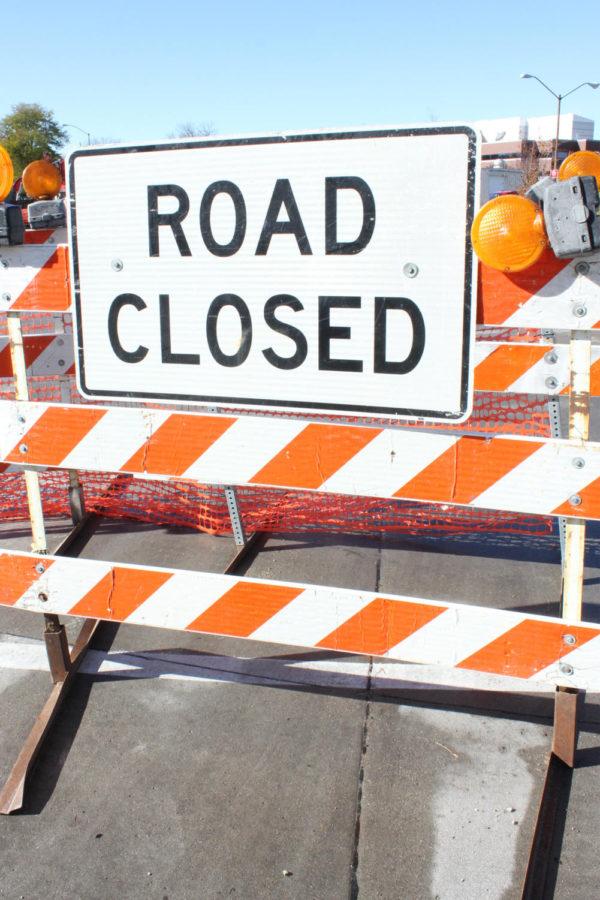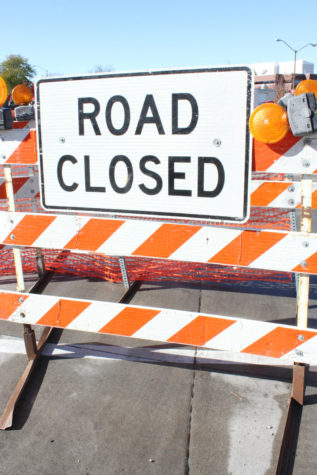Horticulture website offers fresh produce
By Matthew Rezab, [email protected]
Brad Bathey, senior in horticulture, sells excess produce from the Horticulture Research Station outside of the east entrance to Curtiss Hall on Friday, June 19.
June 22, 2015
Beets and radishes and kale … oh my.
Students and faculty at the ISU Horticulture Research Station are back at it again this summer selling excess fresh produce to ISU students, faculty and staff through an innovative first-come, first-serve website.
By logging on to foodlo.cals.iastate.edu, anyone with a valid CyMail address and password can find out which tasty treats are on the menu this week, place an order and pick it up in the Curtiss Hall courtyard (east side of building) or the Harl Commons on Fridays between 11:30 a.m. and 1 p.m.
A variety of produce will be available throughout the summer, but strawberries and pak choi are in season right now. The website is updated every Monday by noon to let customers know what’s available this week.
The 230-acre station is owned by the public and receives public funding, meaning they’re not allowed to directly compete with private businesses and growers.
“We’re state funded, so we can’t compete with local growers,” said Brad Bathey, website manager and senior in horticulture. “That’s where the idea of the website came about. [This way] we can limit our sales to faculty, staff and students.”
Superintendent of the HRS Nick Howell said the Research and Demonstration Farms are unique because while they’re not designed to generate money, the ability to sell excess bulk crop and produce allows them to contribute to the bottom line while being sustainable.
“This year I’m required to generate 40 percent of my operating budget,” Howell said. “That comes through user fees, the sale of bulk crops and then the sale of produce.”
Howell said he understands there is always concern about how safe the food is after being treated for research, but insists anything sold is top quality.
“When it leaves here it actually exceeds safety requirements,” he said. “Anything you buy from [HRS] is potentially safer than anything you’re going to get at a grocery store. We want our university faculty, staff and students to be safe.”
For people who are concerned about how their food is grown, visitors to the website can see who grows the food and find cultural practices for each item being sold.
The website has also given students an opportunity to get hands-on experience outside of the classroom.
“What’s really cool about the website is that I still get to do the sales and go speak with the community,” Bathey said. “It’s just a unique idea. I’m in charge of the website. I’m in charge of making sure which produce goes where, making sure it’s washed, prepared and orders are ready.”
Bathey said he sees a lot of repeat customers, like Hugh Dickinson, a research associate in physics and astronomy.
“First of all it was for the convenience,” Dickinson said. “But it turned out to be really good.”
Howell said people may be surprised by the biggest selling items.
“Our most popular items so far have been kale and beets. I get the beet thing, I don’t get the kale thing at all,” Howell joked.

















